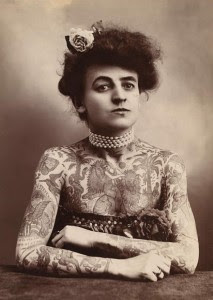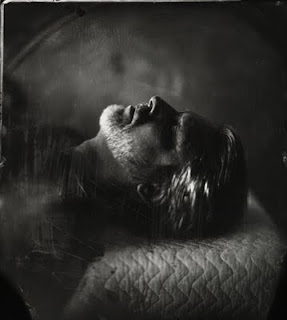
... a blog on how life, death and technologies exist within different social and cultural contexts.
Wednesday, June 30, 2010
The Lady and the Reaper

Tuesday, June 29, 2010
Morbid Ink: Field Notes on the Human Memorial Tattoo
 "Memorial tattooing is, as Marita Sturken discusses the memorialization of the dead, a technology of memory. Yet the tattoo is more than just a representation of the dead. It is a historiographical practice in which the living person seeks to make death intelligible by permanently altering his or her own body. In this way, memorial tattooing not only establishes a new language of intelligibility between the living and the dead, it produces a historical text carried on the historian’s body. A memorial tattoo is an image but it is also (and most importantly) a narrative." from http://observatoryroom.org/2010/05/29/memorial-tattoo/
"Memorial tattooing is, as Marita Sturken discusses the memorialization of the dead, a technology of memory. Yet the tattoo is more than just a representation of the dead. It is a historiographical practice in which the living person seeks to make death intelligible by permanently altering his or her own body. In this way, memorial tattooing not only establishes a new language of intelligibility between the living and the dead, it produces a historical text carried on the historian’s body. A memorial tattoo is an image but it is also (and most importantly) a narrative." from http://observatoryroom.org/2010/05/29/memorial-tattoo/ Friday, June 18, 2010
Life Before Death

http://www.lensculture.com/schels.html
This is a very interesting exhibition and stirred up quite a lot of controversies. What is about corpses that make them unsuitable to be represented? |or is it death that resist representation? Suffering?
"The Family and the Land" by Sally Mann

Location: The Photographers’ Gallery, 16 – 18 Ramillies Street, W1 Admission Free
Tuesday, June 15, 2010
"Crossing the digital divide in the other direction" David Frolich - Innovation Interface
The final Innovation Interface talk of the Summer is this Thursday 17th June at The Science Gallery (Dublin), at 6.30pm and afterwards at Kennedy’s public house. Join us as we welcome David Frohlich, Director of Digital World Research Centre at the University of Surrey as he discusses "Crossing the digital divide in the other direction: Community-based innovation on the Bespoke Project"
"Death and the Media": CALL FOR PAPERS
Death, Dying and Bereavement (DDB) Study Group
Monday 15thNovember 2010
send 250 word abstracts for 20 minute papers to Julian Matthews (jpm29@leicester.ac.uk). Deadline for abstract submission is Friday 17thSeptember 2010.
Monday, June 14, 2010
Death and imagination

EASA, 2010: Crisis and imagination
Maynooth, 24/08/2010–27/08/2010 (W013)
Death and imagination:
creative strategies to embrace and avoid the crisis of death
26 Aug, 2010
Convenors
Chiara Garattini (TRIL Centre - UCD CASL)
John Troyer (University of Bath)
Long Abstract
Creativity and mortality have co-existed since the dawn of time. The social sciences often explain imaginative elaborations on the subject of death as a tool for resolving the "crisis of death" at a personal and social level. Along this line of argument, the crisis of death is more acutely problematic when there is a crisis of imagination. Western social attitudes towards death are said to be characterised by denial and refusal. Technology and medicine are often instrumental in this dilemma as they both allegedly reinforce our reluctance in accepting death as part of life. On the other hand, there is a sort of expectation that non-western societies never "deny" death but instead "face" it in an elaborate and imaginative manner.
In this workshop we want to challenge these concepts and would like instead to explore the following ideas: how the human imagination is used to avoid thinking about death and how individuals constantly think about death through these same creative impulses. This paradoxical phenomenon becomes especially evident in the Western media, where death related themes become everyday entertainment. Our goal is to explore how individuals create concepts of death that do everything but think about death, while at other times embracing all its creative potentialities. Finally, we want to argue that many people deploy both of these "strategies" and that these activities necessarily overlap.
http://www.nomadit.co.uk/easa/easa2010/panels.php5?PanelID=590 for the list of papers being presented
[image "Love & Death" by Dr Pat http://www.flickr.com/photos/patrickwilken/99369266/ ]
